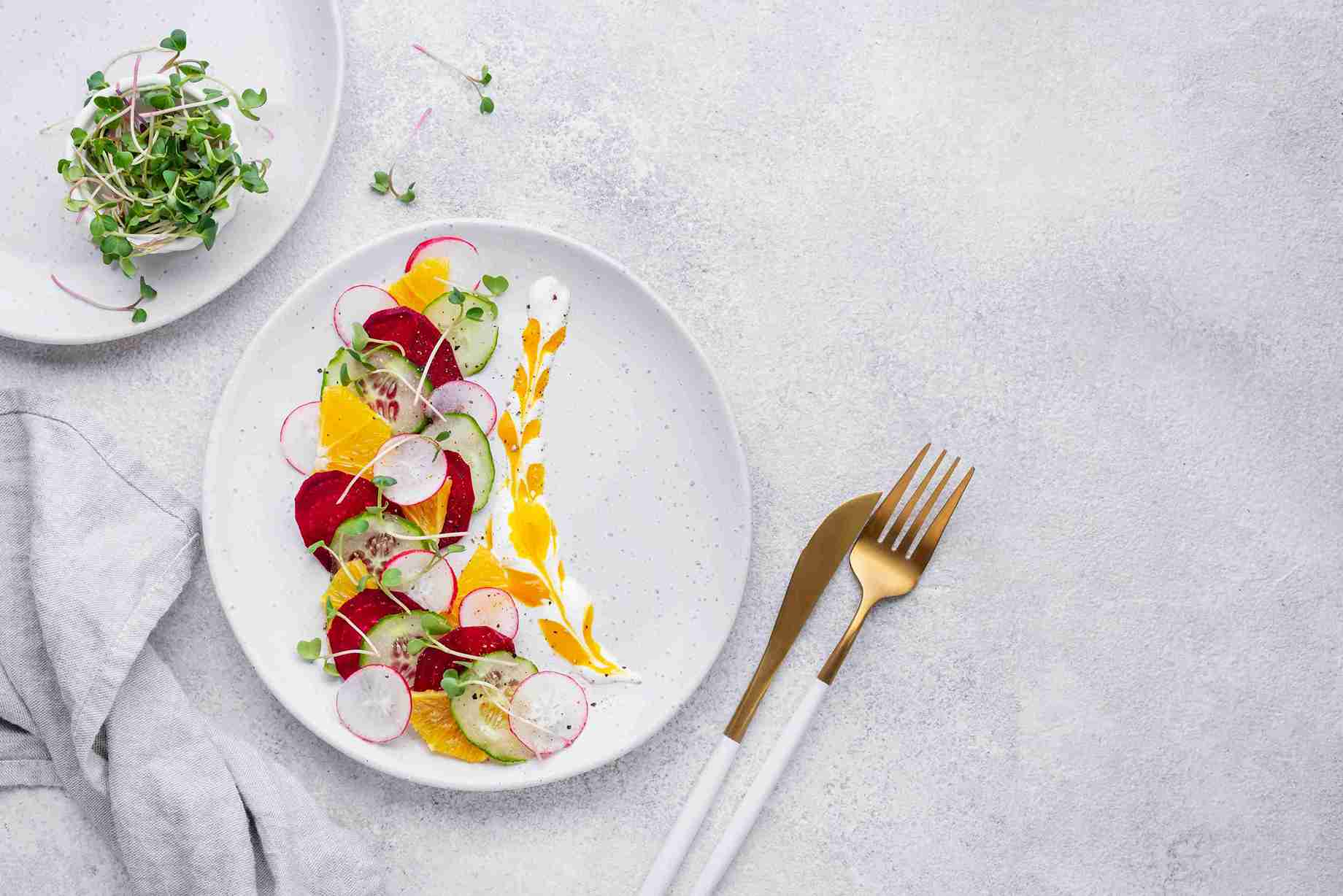 SHARE
SHARE
10 Best Food Plating Techniques Like a 5-Star Restaurant
Sovia
Enjoying food is not just about taste but also presentation. Food plating is the art of arranging dishes in an appealing way to enhance the dining experience and even influence the perception of taste.
In the culinary business, the presentation of a dish can determine a customer's first impression. So, how do you achieve excellent food plating to make dishes look more professional and appetizing? Let's dive in!
What Is Food Plating?
Food plating is the technique of arranging and decorating food on a plate to create an attractive appearance.
Beyond aesthetics, plating enhances the dining experience, gives a dish its identity, and increases customer appeal.
Food plating is not exclusive to five-star restaurants. Even in small eateries, cafes, or home-based culinary businesses, an appealing presentation can add value.
Traditional Indonesian dishes can also look more enticing with the right plating techniques.
Read more: What is Food Grammar? The Secret to the Right Dosage for Consistent Taste!
Best Food Plating Techniques Like a Five-Star Hotel
Source: freepik.com
Plating is not just about serving food on a plate; it is an art that enhances visual appeal and the dining experience.
A good plating technique can make a dish more appetizing and look more professional. Here are some food plating techniques used in five-star hotels, which can also be applied to traditional and Indonesian cuisine:
1. Choose the Right Plate
Source: freepik.com
The choice of plate greatly affects the presentation of a dish. Select a size that fits—neither too small nor too large.
A plate that is too small may make the dish look overcrowded, while a plate that is too large can make the portion seem insufficient.
Plate color also plays a crucial role. White plates are commonly used as they complement all types of food, but you can experiment with other colors as long as they keep the dish as the focal point.
2. Arrange Food with Balance
Source: freepik.com
When plating, consider the balance of colors, textures, and positioning. Use contrasting colors to make the dish more vibrant.
For example, add brightly colored vegetables like carrots or cauliflower for variety.
Ensure a mix of textures, such as pairing tender meat with fresh vegetables and smooth mashed potatoes.
3. Use Suitable Garnishes
Source: freepik.com
Garnishes are not just decorations; they can also enhance the dish’s flavor. Choose garnishes that complement the meal, such as basil leaves, edible flowers, crushed nuts, or chocolate shavings for desserts.
You can also create patterns with sauces, such as lines or dots, to add an artistic touch.
4. Apply the “Odd Numbers Rule”
Source: freepik.com
Good food plating often follows the odd-number rule. Arranging three or five small food pieces looks more appealing than even-numbered portions.
This technique can also be applied to traditional food plating to make it more aesthetically pleasing.
5. Separate Wet and Dry Ingredients
Source: freepik.com
When serving food, place wet elements like sauces or broths at the base to prevent dry ingredients from becoming soggy. This technique maintains texture and keeps the plating neat.
6. Keep the Plate Clean
Source: freepik.com
Messy sauce splatters or unused garnishes can diminish the aesthetics of a plated dish. Use a tissue or cloth to clean the edges of the plate before serving.
7. Use Sauces as Decorative Elements
Source: freepik.com
Sauces can serve as visual elements that enhance the dish’s appearance.
Spread sauce thinly around the food or create attractive patterns for added aesthetic value.
If the sauce is a key part of the dish, serve it in a separate container to avoid affecting the food’s texture.
8. Layer the Food Elements
Source: freepik.com
Layering techniques can improve both the aesthetics and flavors of a dish. By stacking ingredients, each bite becomes richer and more varied.
This technique is often used in food plating to create a more appealing look.
9. Maintain Proper Proportions and Portions
Source: freepik.com
Ensure each element on the plate has the right portion size, not too much or too little. Balance proteins, carbohydrates, and vegetables so that the dish is not only visually appealing but also well-proportioned.
10. Arrange the Dish According to Clock Positions
Source: freepik.com
If you’re unsure how to arrange food, use the clock technique as a guide.
Place the main dish in the center and arrange the side dishes following the positions of a clock. This method helps create a tidy and professional presentation.
Read more: 12 Ways to Create a Restaurant and Culinary Business Menu
Conclusion
Food plating is not just about aesthetics — it’s a strategy to enhance the customer experience and build a professional image for your restaurant.
An attractive presentation can stimulate appetite while reflecting your brand’s quality.
With the right plating techniques and an efficient kitchen management system like ESB Kitchen, restaurants can serve dishes consistently, quickly, and with minimal errors.
Features like serving time analysis, barcode scanning, and a paperless system help streamline processes and improve team coordination.
Now’s the time to boost your kitchen efficiency and presentation quality with ESB Kitchen. Talk to our team today and find the right solution for your business!
 SHARE
SHARE





